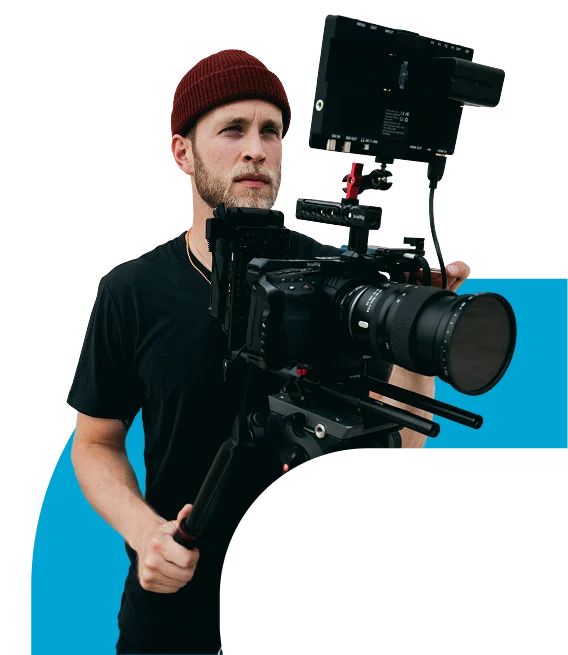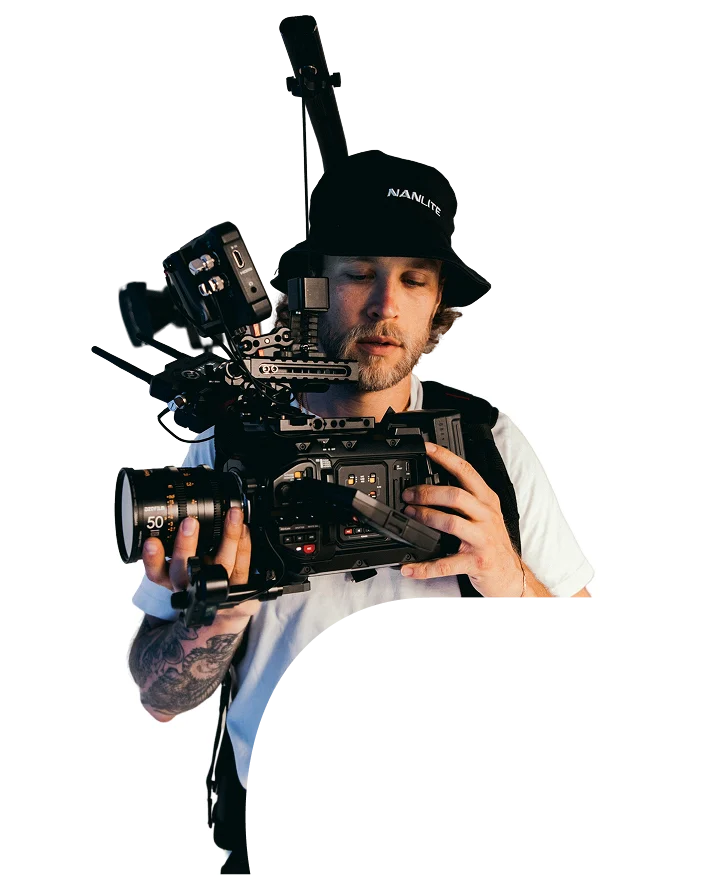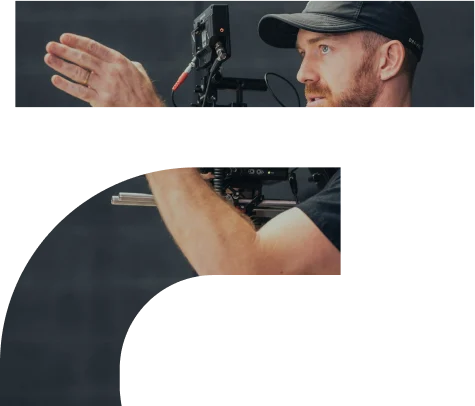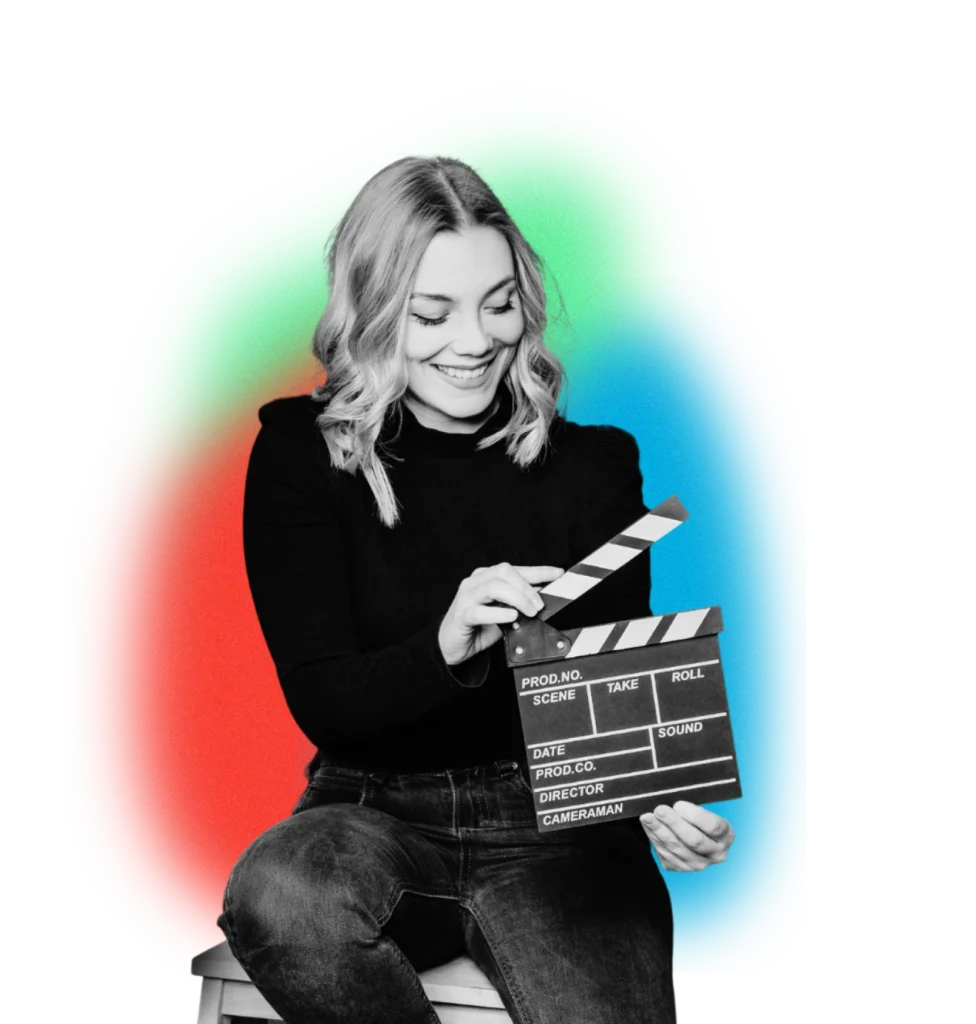Director of Photography
The Director of Photography (DP) in a film is like the visual storyteller. They craft the movie’s look and feel through the art of cinematography.
The Director of Photography (DP) in a film is like the visual storyteller. They craft the movie's look and feel through the art of cinematography. Just like a painter selects colors and brushes to create a masterpiece, the DP (also known as the cinematographer) chooses cameras, lenses, lighting, and camera angles to bring the director's vision to life.
They work hand in hand with the director to understand the mood, tone, and emotions the film should evoke. They decide how scenes are framed, whether they'll be bright and cheerful or dark and moody. It's their job to make every shot count, adding depth and meaning to the story.
They play with different lenses for various effects—wide angles for sweeping landscapes or close-ups for intense emotions. Lighting is their secret weapon; they set the mood by controlling brightness, shadows, and colors. They might use natural light or create their own magic with artificial lights to set the scene just right.
But it's not just technical prowess; creativity is key! They experiment with camera movement, deciding if a scene needs a smooth glide or a shaky handheld feel for intensity. Every decision they make impacts how the audience experiences the movie.


The director of photography is responsible for making everything you see on the screen look its very best (or its very worst if need be). They work closely with the director, consulting each other on how the movie should look and feel. It's their job to turn those ideas into actual shots.
They decide where the camera goes, what kind of lighting to use, and even how colors should show up in each scene. They work with the gaffers, grips, and other members of the crew to set the shots, put the lighting in place, and get the camera rolling.
They can make a scene feel scary, happy, or dramatic just by playing with light and shadows. They also figure out which camera angles and movements will tell the story best, and relay the director’s vision of the film.
They experiment with different lenses, camera moves, and lighting setups to make every shot feel special. They create this whole world on screen that looks so real, but it's all carefully planned and crafted. The DP's job is to make the movie visually fantastic, whether it’s taking place in the middle of a desert or in the back of a New York City alleyway.
Becoming a Director of Photography (DP) is a journey that combines gaining technical expertise while nurturing a creative vision at the same time. Each experience, project, and connection you make contributes to your growth as a Director of Photography.
The best thing to do is give yourself a solid foundation of movies. Take film study classes, cinematography programs, and photography courses. Understanding the fundamentals of visual storytelling, lighting techniques, and camera operations gives you a sturdy base of knowledge. Hands-on experience, where you get to take what you’ve learned to practical use, is just as important however.
Get involved in film projects, student productions, or internships. Work as a camera assistant or in any role on set to grasp the dynamics and workflow of filmmaking. Familiarize yourself with cameras, lenses, lighting equipment, and editing software. This is also a great time to connect with other film professionals–consider assisting established DPs or working as a camera operator.
Learning from seasoned professionals on real sets can be invaluable and can position you for work in the future. Start creating your portfolio showcasing your best work. Whether it's short films, documentaries, or even photography projects, a strong portfolio speaks volumes about your skills and creativity.

While a degree in film, cinematography, or a related field can provide a strong foundation and valuable knowledge, it’s not the sole path to success in this industry. What matters most in cinematography is skill, experience, and a solid portfolio.
Many successful DPs have climbed the ladder through hands-on experience, workshops, mentorship, and on-set learning rather than solely relying on a formal degree. However, a degree does offer benefits. It can provide structured learning, access to equipment, and a base of knowledge.
But the film industry highly values practical skills, creativity, and a strong portfolio. What often speaks louder than a degree is your ability to demonstrate a keen eye for visuals, understanding of lighting, camera techniques, and storytelling through your work. Many aspiring DPs balance formal education with real-world experience.
They might pursue internships, work on independent projects, or assist established DPs to gain practical knowledge and build connections while taking classes at the same time. So a degree can be advantageous, but what truly matters is your dedication, passion for the craft, continuous learning, hands-on experience, and the quality of your work showcased in your portfolio.
To become a Director of Photography (DP) in film, you’ll need a combination of technical skills, creative abilities, and a talent for collaboration and leadership. This is one of the most important positions on the film set, and your skills will be developed over several years to become a proficient DP.
You’ll need to master the technical aspects of cinematography, understanding cameras, lenses, lighting equipment, and editing software inside out. Knowledge of various film formats and digital technologies is a must. Develop a keen eye for visual storytelling through camera angles, framing, and movements–your ability to convey a story visually is critical.
Learn the art of lighting and how different light sources, their intensity, direction, and color influence mood and atmosphere in a scene. Learn how to compose shots effectively, the rule of thirds, framing techniques, and how to create aesthetically pleasing compositions that enhance storytelling.
As a DP, you’ll collaborate closely with directors, production designers, and various crew members. The ability to articulate your vision and understand others’ perspectives is crucial. Also, things might not always go as planned so being quick on your feet and finding creative solutions to technical or logistical challenges is essential. You’ll also want to learn to delegate, especially on larger projects.
industry.
There is no one way to learn how to be a director of photography. Some go the university route and the formal education it provides, while others enter the film industry at the bottom rung of the ladder and work their way up gaining practical experience that is so important. A mixture of the two will let you put what you learn into practice.
Film studies, cinematography, or visual arts courses offer structured learning, covering the basics of cinematography, lighting, and storytelling techniques. Attending cinematography workshops, seminars, and industry events provides opportunities to learn from experienced professionals, network, and stay updated on the latest trends and technologies.
But you need to get your hands dirty, too. Get involved in student film projects, independent productions, or internships. Offer to assist on sets, work as a camera operator, or take on any role that allows you to gain practical experience and familiarize yourself with equipment and how to work with others on the set.
Start creating your own films, experimenting with different cameras, lenses, lighting setups, and editing techniques. This hands-on approach allows you to apply what you’ve learned and build a portfolio. Combining theoretical knowledge with practical experience, continuous learning, networking, and a passion for visual storytelling will give you a well-rounded skill set.
The time it takes to become a director of photography isn’t set in stone–it can vary based on individual experiences, dedication, and opportunities. Generally, it takes years of learning, practice, and gaining hands-on experience to establish oneself as a proficient DP. Shorter if you want to work on smaller films, longer if you want to build up your credentials for bigger projects.
For some, the journey begins during college—a film studies major or courses in cinematography might offer a foundational understanding. However, real learning often starts through practical involvement in film projects, internships, or working on sets, oftentimes while pursuing a formal education. This allows you to use what you’ve learned in the classroom on the set.
On average, it might take anywhere from 5 to 10 years of dedicated learning, practice, and networking to become a viable Director of Photography. You can speed up the timeline a bit if you have extra drive or innate ability, leveraging networking, mentorship, and exceptional talent to fast-track your career. The quality of experience, the diversity of projects, networking, and the ability to adapt and grow within the ever-evolving film industry play a big part in your success.
The relationship between a Director of Photography (DP) and a Film Director is like a creative partnership that shapes the visual storytelling of a film. The Film Director is the big-picture visionary—the storyteller. They are responsible for the overall creative direction, including performances, narrative, and the emotional tone of the film. They communicate the story’s essence, the characters’ emotions, and the intended mood of each scene.
On the other hand, the DP focuses on the visuals—the look and feel of the movie–following the director’s lead. They translate the director’s vision into practical, visual elements. The collaboration begins with pre-production: they sit down, discuss the script, and plan how to visually translate each scene. The DP suggests technical aspects like camera angles, lens choices, and lighting setups that align with the director’s vision.
During filming, they work side by side on set. The director guides actors and oversees performances, while the DP ensures the shots reflect the director’s vision through framing, lighting, and camera movements. They constantly communicate, making on-the-spot decisions to capture the scene as intended.
The director might have a say in the editing process, while the DP ensures the visual continuity and overall look remains consistent. Their partnership is rooted in mutual respect and communication–they will continue to work together on future films if they are successful.
A Director of Photography (DP) uses a range of equipment to craft the visual magic you see on screen. And while they may not operate or set up some of the gear, they need to have a rock-solid understanding of how it all works.
Cameras top the list of course–the DP chooses cameras based on the film’s requirements. They might opt for digital cinema cameras or use DSLRs for more flexibility in certain situations. The DP selects lenses based on focal length, aperture, and style. Wide-angle lenses capture expansive scenes, while telephoto lenses focus on details and compress the background.
Lighting plays a massive role in setting the tone for a movie, so they use a variety of lights—such as tungsten, LED, or HMI—to create mood and atmosphere. Diffusers, reflectors, and flags modify and control light for desired effects. filters control exposure, polarizers enhance colors, and matte boxes control light and glare. Other accessories like gimbals, sliders, and underwater housings offer versatility in shooting.
Grip gear is used to hold cameras, including stands, rigs, dollies, cranes, and stabilizers. They help stabilize the camera, achieve specific movements, and ensure smooth shots. And, while not used on set, editing software helps the DP review footage and collaborate during post-production. Experimentation and familiarity with various gear allow them to achieve the director’s vision effectively.
The salary of a Director of Photography (DP) can vary based on several factors. But, generally speaking, entry-level DPs might earn around $40,000 to $60,000 annually. Experienced and established DPs can earn significantly more, with salaries ranging from $100,000 to several hundred thousand dollars per project. Top-tier DPs working on major Hollywood productions or high-profile commercials can earn well over a million dollars for a single project.
More experienced DPs command higher salaries, which makes sense of course. A DP might earn an entry-level wage at the start, but as they gain expertise and a robust portfolio, their earning potential increases. The type of project influences pay as well. Feature films, high-budget commercials, or TV series tend to offer higher compensation compared to independent films, documentaries, or smaller projects.
Salaries can differ based on location–major filmmaking hubs like Los Angeles or New York often offer higher pay due to higher living costs and more opportunities. Some DPs belong to cinematographer unions like the International Cinematographers Guild (ICG) and have standardized pay rates and benefits.
Negotiating contracts and rates plays a significant role and DPs who can advocate for their skills and experience effectively may secure better pay. This is especially true for unaffiliated directors of cinematographers. Freelancing is common in this field, so income can fluctuate based on project availability and personal connections.
The film industry offers a multitude of job opportunities like these
Before you begin your job/career search think hard about what you want to do. What career our you passionate about? The good news is that as a Film Connection graduate you’ve already been exposed to most, if not all of these career choices. Once you figure out what career in the film industry turns you on, it’s time to put our Career Services and Job Placement Department to work for you.
Fill out the form to contact admissions and learn about your opportunities.

"*" indicates required fields
*Not all programs are available in every state. Consult an Admissions Representative to learn more.





Film Connection © 2025 | All Rights Reserved | Built with 💙 by DesignTork